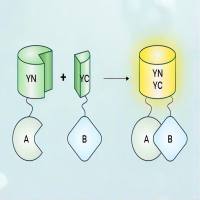Utilizing Bimolecular Fluorescence Complementation (BiFC) to Assay ProteinProtein Interaction in Plants
互联网
互联网
相关产品推荐

Invent Minute植物膜蛋白提取试剂盒 Minute Plasma Membrane Protein Isolation Kit for Plants 货号:SM-005-P
¥1500

SARS-CoV-2 (2019-nCoV) Nucleocapsid/N Antibody Titer Assay Kit | SARS-CoV-2 (2019-nCoV) Nucleocapsid/N Antibody Titer Assay Kit
¥5000

双分子荧光互补实验| 双分子荧光互补(BiFC)|植物双分子荧光互补BiFC|
¥5999

Invent Minute粘性植物叶绿体分离试剂盒 MinuteTM Chloroplast Isolation kit for Mucilaginous Plants 货号:CF-053
¥1500

Plants 植物提取物
询价
相关问答

